
Your guide to recently released books, CDs and other teaching resources. For additional reviews of French-language resources, click here. With the exception of some classroom sets, items reviewed are available on loan from the Margaret Wilson Library at the College. Contact Olivia Hamilton at 416-961-8800 (toll-free in Ontario 1-888-534-2222) ext. 679 or e-mail library@oct.ca. |
Cultures, language and assessment
The Medieval World
Series of 14 books
Reviewed in two parts
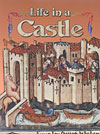
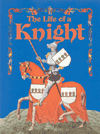
Teacher:
Although there are many books available on the Middle Ages, you won't want to miss this new series with its beautiful colour illustrations.
Topics are presented in two-page spreads, with each book containing 12 to 14 topics. (Food and Feasts includes Farming, Peasants' Food, Markets & Fairs and The Spice Trade.)
Books begin with a brief introduction to the Middle Ages. General issues regarding medieval history are not covered in detail. Instead, the focus is cultural: clothing, towns, trade, travel, food, feasts, children and games. There are instances when content does not clearly relate to the title. For example, Children and Games includes information on careers, such as knights and samurai. Clothing contains an interesting section on hygiene and beauty.
Timelines, maps, glossaries and indexes are included. The reading level is Grade 5 and the interest level is Grades 4–9. These books are rich resources for projects, curriculum enhancement and general-interest reading.
Reviewed by Margaret Grift, a librarian at Brantford Christian School.
Student:
If you want to know what girls thought of bathing in medieval times, how they painted their faces white to look pale and why castles were designed with skinny windows, check out The Medieval World series. The books cover topics such as Women and Girls in the Middle Ages, The Life of a Knight, Medieval Society and Life in a Castle.
The vocabulary is perfect for kids in Grade 4 who have to study medieval times. Tough words appear in bold and are explained in a glossary at the end.
Each page is full colour, with drawings that complement the text and captions that give extra information.
I recommend these books for research or for anyone interested in medieval times.
Reviewed by Brittany Jamieson, a Grade 8 student at Devins Drive Public School in York Region.
![]() The Medieval World series (14 titles), Crabtree Publishing Company, St. Catharines, Ontario, 2003–04, ISBN 0-7787-1371-7, softcover, each 32 pages, $9.86, tel 905-682-5221 or 1-800-387-7650, fax 905-682-7166 or 1-800-355-7166, www.crabtreebooks.com
The Medieval World series (14 titles), Crabtree Publishing Company, St. Catharines, Ontario, 2003–04, ISBN 0-7787-1371-7, softcover, each 32 pages, $9.86, tel 905-682-5221 or 1-800-387-7650, fax 905-682-7166 or 1-800-355-7166, www.crabtreebooks.com
Franklin's Picture Dictionary
by Rosemarie Shannon
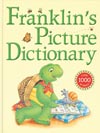 Since this delightful book was clearly intended for use by students, I asked my Grade 1 class to assist in the review process.
Since this delightful book was clearly intended for use by students, I asked my Grade 1 class to assist in the review process.
They were immediately drawn to the cover with its illustration of Franklin the turtle – a well-known figure in this age group. Using picture-clues as an aid, the students were able to read the title. Several knew what a dictionary was and how it could be used. Franklin is shown sitting on a cushion with a smile on his face. My students responded that this must mean that using a dictionary can be fun. Oh, the impact of a great illustration!
On all pages my students found something amusing or of interest. I was impressed with the thought that went into this publication. The contents page features large print, with page numbers visually connected by dots. Dictionary pages clearly identify each letter, both on its own and within the alphabet, which runs across the top of every page. A very helpful strategy! Words are large and each is accompanied by an illustration, a short definition and an example related to Franklin.
Other sections include numbers, days (in a journal format to reinforce writing), months, seasons, body parts and a terrific set of word lists suitable for preschool through Grade 2. A section on How to Use This Book, as well as suggested activities and a well-written synopsis about language learning, are useful for both parents and educators.
Several new and creative ideas are highlighted. The students could not wait to begin using this resource. It is suitable for ages five to eight, kindergarten to Grade 1.
![]() Franklin's Picture Dictionary, Kids Can Press, Toronto, 2004, ISBN 1-55337-652-8, hardcover, 112 pages, $18.95,
distributed by University of Toronto Press, tel 416-667-7791 or 1-800-565-9523,
fax 416-667-7832 or 1-800-667-7832, www.utpress.utoronto.ca,
utpbooks@utpress.utoronto.ca
Franklin's Picture Dictionary, Kids Can Press, Toronto, 2004, ISBN 1-55337-652-8, hardcover, 112 pages, $18.95,
distributed by University of Toronto Press, tel 416-667-7791 or 1-800-565-9523,
fax 416-667-7832 or 1-800-667-7832, www.utpress.utoronto.ca,
utpbooks@utpress.utoronto.ca
Reviewed by Gary Killen and his Grade 1 students at St. Basil's School in Mississauga.
Healthy Kidz
by Kidz Kidding
Performed by J. Paul Adams, George Brasovan and Mary Lou Sicoly
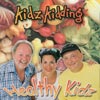 Listening to this CD and reading the accompanying Teacher's Guide makes me sorry that I no longer teach full time. Use it in your primary classroom and I guarantee you will have everyone hopping and singing along.
Listening to this CD and reading the accompanying Teacher's Guide makes me sorry that I no longer teach full time. Use it in your primary classroom and I guarantee you will have everyone hopping and singing along.
Calypso, bluegrass, rhythm and blues, rap and the many other featured styles are so energetic and engaging you won't be able to listen without snapping your fingers or tapping a foot. Active participation is encouraged and developmental skills, including listening, focus, counting, movement, language and musical skills (beat, rhythm and form) are all part of the learning process. The themes are current to children's interests and the catchy lyrics and music will easily get children involved.
The accompanying book includes the lyrics, lesson plans, reproducible activity sheets and teaching notes for all featured themes and songs. Curriculum connections are well explained.
In 2002 Kidz Kidding received a Juno Nomination in the category of Best Children's Album for their Chase a Rainbow CD. They are not only exceedingly talented, they are also Canadian. I highly recommend this resource to anyone teaching in the primary grades.
![]() Healthy Kidz (CD and Teacher's Guide), Music Machine Records, Unionville, $16.99, distribution – Indie Pool, Toronto, tel 416-424-4666 or 1-888-884-6343, fax 416-424-4265 or 1-877-774-6343, or www.kidzkidding.com, paul@kidzkidding.com
Healthy Kidz (CD and Teacher's Guide), Music Machine Records, Unionville, $16.99, distribution – Indie Pool, Toronto, tel 416-424-4666 or 1-888-884-6343, fax 416-424-4265 or 1-877-774-6343, or www.kidzkidding.com, paul@kidzkidding.com
Reviewed by Doreen Ferns, who retired after a 32-year career and is now an occasional teacher in York Region District School Board.
Making Words Stick
by Kellie Buis
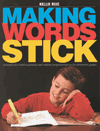 As teachers we are always looking for innovative ways to inspire our students – the magic tricks that let learning and progress take place and help information to stick in their minds. Kellie Buis's research-based book provides practical ways of helping anchor students' vocabulary and improve reading comprehension. Set in the familiar language of read-alouds, shared reading and activity centres, it can be used for most students but will especially benefit students from low socio-economic or ESL backgrounds.
As teachers we are always looking for innovative ways to inspire our students – the magic tricks that let learning and progress take place and help information to stick in their minds. Kellie Buis's research-based book provides practical ways of helping anchor students' vocabulary and improve reading comprehension. Set in the familiar language of read-alouds, shared reading and activity centres, it can be used for most students but will especially benefit students from low socio-economic or ESL backgrounds.
Each of seven chapters contains useful examples. The building blocks are semantic mapping, prompting conversations with STRETCH charts and independent word play. The strategies provided can be used for a whole class or small-group instruction.
Making Words Stick shows teachers how to involve students in learning – drawing on their prior knowledge. Mapping out a visual display of what they already know gives them an anchor for new information.
The STRETCH charts can be adapted to grade levels from primary to intermediate and can be used in teacher-directed instruction or independent activity. Most information is presented in point form, with the focus strategy clearly indicated at the beginning of each chart. Over 20 strategies are provided.
This book is practical and has enough variety to appeal to most teachers. It can be easily adapted to a variety of teaching and learning styles, from Senior Kindergarten to Grade 8.
![]() Making Words Stick, Pembroke Publishers, Markham, Ontario, 2004, ISBN 1-55138-174-5, softcover, 157
pages, $24.95, tel 905-477-0650 or 1-800-997-9807, fax 905-477-3691 or
1-800-339-5568, www.pembrokepublishers.com, mary@pembrokepublishers.com
Making Words Stick, Pembroke Publishers, Markham, Ontario, 2004, ISBN 1-55138-174-5, softcover, 157
pages, $24.95, tel 905-477-0650 or 1-800-997-9807, fax 905-477-3691 or
1-800-339-5568, www.pembrokepublishers.com, mary@pembrokepublishers.com
Reviewed by Elda Fredette, who is a Special Education resource teacher at St. James School in Oakville.
Idioms for Aliens
A Grammar Revue of Plays and Verse
by Ed Butts illustrated by Michael Tonn
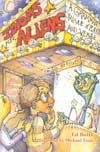
Guelph native Ed Butts spent seven years teaching English as a Second Language in the Dominican Republic. In an attempt to bring humour to typically mundane grammar lessons, he began creating plays.Seeing the plays' success in capturing students' interest, colleagues persuaded him to publish this collection of 25 plays.
The introduction – Grammar Rap: The Eight Parts of Speech – serves as a good reminder to both teachers and students. From there, Butts launches into plays that can be used in beginner to advanced ESL classes as well as Junior, Intermediate and Senior English and adult education.
The Storyteller highlights foibles of the English language: if once means one time, then surely tooce means two times; hood and food look the same and therefore must rhyme.
Younger students will enjoy playing the parts in Punctuation Play, in which punctuation cards are held up at appropriate (or inappropriate) times.
Celebrity Adjectives is a great exercise for second-language learners that is easily adaptable to the FSL classroom. Students imitate a gathering of snooty film stars at an awards show. This would be an easy play for students to use as a basis for writing their own plays.
In Article Play, where students learn about a versus an, confusion abounds: are you talking about an apple or a napple?
Hey, Boo, Yum, Yuck, Aw, Oh, Wow, PU, Ouch, Yea, Eek and Phooey are the colourful characters in Interjection Job Selection. In this lively play, interjections vie for the next job. It is sure to amuse both performers and audience.
English/ESL teachers who would like to try their hand at drama in class will find this book useful. One caveat: although Idioms for Aliens does treat a variety of grammar points, there are no actual grammar lessons or overt explanations for those who need to brush up!
![]() Idioms for Aliens(CD included), Maupin House Publishing, Gainesville, Florida, 2004, ISBN 0-929895-73-8, softcover, 128 pages, $17.95, tel 352-373-5588, fax 352-373-5546, www.maupinhouse.com, info@maupinhouse.com
Idioms for Aliens(CD included), Maupin House Publishing, Gainesville, Florida, 2004, ISBN 0-929895-73-8, softcover, 128 pages, $17.95, tel 352-373-5588, fax 352-373-5546, www.maupinhouse.com, info@maupinhouse.com
Reviewed by Vivienne Kraus, who is a French and ESL teacher currently on leave from the Toronto District School Board.
Authentic Assessment
Designing Performance-Based Tasks
by Katherine Luongo-Orlando
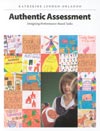 Elementary teachers looking for information and support materials on assessment will find Authentic Assessment an excellent resource.
Elementary teachers looking for information and support materials on assessment will find Authentic Assessment an excellent resource.
Luongo-Orlando discusses the nature of authentic assessment, provides a guide to planning performance-based assessments and reviews steps for designing performance tasks. And that's just the first chapter. Chapters two through seven cover developing assessment and evaluation tools (such as rubrics), planning activities, administering assessment, gathering evidence of learning, developing students' self-assessment skills and developing a personal vision or philosophy of assessment.
Teachers will be pleased to find lots of reproducible pages, sample assessments and samples of student work. Examples are language-arts based, but are applicable across curriculum. Luongo-Orlando strikes just the right balance between theory and practice, making Authentic Assessment ideal for classroom teachers.
This excellent resource should certainly be included in professional collections, although many teachers will want personal copies. It would make a wonderful gift for any elementary teacher.
![]() Authentic Assessment, Pembroke Publishers, Markham, Ontario, 2003, ISBN
1-55138-152-4, softcover, 128 pages, $18.95, tel 905-477-0650 or 1-800-997-9807,
fax 905-477-3691 or 1-800-339-5568, www.pembrokepublishers.com,
mary@pembrokepublishers.com
Authentic Assessment, Pembroke Publishers, Markham, Ontario, 2003, ISBN
1-55138-152-4, softcover, 128 pages, $18.95, tel 905-477-0650 or 1-800-997-9807,
fax 905-477-3691 or 1-800-339-5568, www.pembrokepublishers.com,
mary@pembrokepublishers.com
Reviewed by Brenda Dillon, who is the Teacher-Librarian at Philip Pocock Catholic Secondary School, Dufferin-Peel Catholic District School Board.
The Underground Reporters
by Kathy Kacer
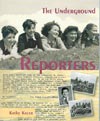 In her book The Underground Reporters, Kathy Kacer provides an account of the life of a young Czechoslovakian Jew before and after the Nazi invasion of his homeland.
In her book The Underground Reporters, Kathy Kacer provides an account of the life of a young Czechoslovakian Jew before and after the Nazi invasion of his homeland.
Based on the recollections of John Freund, an Auschwitz survivor who now lives in Canada, the book highlights the pre-war experiences of Freund and his schoolmates in Budejovice (Boo-day-ho-vee-tsay) and their aspirations to be happy and protected in their own community.
Following the invasion, John and his friends began a newspaper to unite their small community against restrictions and laws that were quickly eroding their way of life. Titled Klepy [gossip], the newspaper became a lifeline for the Jewish community.
Though many of its contributors were killed in the holocaust, all 22 editions of Klepy survive and are currently on display in the Jewish Museum in Prague – revealing the joys, dreams and musings of an entire community, as Kacer says, for the whole world to see.
A rich assortment of photographs and maps help young readers connect with the people and places described in the book, though more emphasis on John's thoughts and feelings throughout the occupation might have made the connection even stronger.
This year, 2005, marks the 60th anniversary of the liberation of the death camp at Auschwitz – making this a timely contribution to writing about the holocaust for young people.
![]() The Underground Reporters, Second Story Press, Toronto, 2004, ISBN 1-896764-85-1, softcover, 128 pages,
$14.95, tel 416-667-7791 or 1-800-565-9523, fax 416-667-7791 or 1-800-221-9985,
www.secondstorypress.on.ca, info@secondstorypress.ca
The Underground Reporters, Second Story Press, Toronto, 2004, ISBN 1-896764-85-1, softcover, 128 pages,
$14.95, tel 416-667-7791 or 1-800-565-9523, fax 416-667-7791 or 1-800-221-9985,
www.secondstorypress.on.ca, info@secondstorypress.ca
Reviewed by Michael Bellrose, who teaches Grade 7 at Copper Cliff Public School in Sudbury.
The Write Genre
by Lori Jamison Rog and Paul Kropp
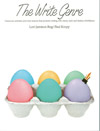 Every classroom teacher desires a group of students who can write with “clarity, style and flashes of brilliance.”
Every classroom teacher desires a group of students who can write with “clarity, style and flashes of brilliance.”
In order for the writing process to be authentic and purposeful, students must learn the structures, formats, language and styles that are most appropriate to the task. The Write Genre provides hands-on activities to support all stages of the writing process. Teacher-directed assignments are supplemented with student-selected lessons that emphasize writing as a learning process.
Fiction and non-fiction writing is presented in six genres. Read-aloud models of each are presented for use in the classroom. The authors stress the importance of “immersing and marinating” students in all of the forms of writing and provide many reproducible frameworks – organizers, prompts, checklists and grids as well as rubrics – for instruction and assessment.
I found the section dedicated to “voice” of great value. Teachers work to prepare students to be confident in their writing and able to engage readers through their own personality and style. Here, we have an excellent blueprint for doing just that.
I highly recommended this book for Grades 3 through 9.
![]() The Write Genre, Pembroke Publishers, Markham, Ontario, 2004, ISBN 1-55138-172-9, softcover, 168 pages, $24.95, tel 905-477-0650 or 1-800-997-9807, fax 905-477-3691 or 1-800-339-5568, www.pembrokepublishers.com, mary@pembrokepublishers.com
The Write Genre, Pembroke Publishers, Markham, Ontario, 2004, ISBN 1-55138-172-9, softcover, 168 pages, $24.95, tel 905-477-0650 or 1-800-997-9807, fax 905-477-3691 or 1-800-339-5568, www.pembrokepublishers.com, mary@pembrokepublishers.com
Reviewed by Dorothea Bryant, a retired Windsor and Durham educator who works as a student-teacher supervisor for Ontario students attending the teacher education program at Medaille College, Buffalo, New York.
Bubbles, Rainbows and Worms
Science Experiments for Preschool Children
by Sam Ed Brown
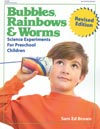 Science is a subject often overlooked in preschool and kindergarten. But this delightful book suggests a variety of fun experiments to stimulate inquisitive minds on topics as diverse as air, animals, the environment, plants, our senses, colour and experiences with water.
Science is a subject often overlooked in preschool and kindergarten. But this delightful book suggests a variety of fun experiments to stimulate inquisitive minds on topics as diverse as air, animals, the environment, plants, our senses, colour and experiences with water.
A good example of the activities is the one involving bubbles. Every child likes to blow bubbles, and through this experiment they learn both that air is a real substance, with weight, and that light shows all the colours of the rainbow when it passes through a bubble. A list of materials needed and suggested words for discussion – blow, bubbles, circles, colours, liquid, pop, reflect – are provided.
Because young children need to feel comfortable with the objects they examine, thought has been given to the materials used. They are all easily found, everyday things, such as coloured rocks, nails, marbles, pieces of plants and water. All the necessary equipment may be readily found in most kitchens or classrooms.
The book is appropriate for preschool, kindergarten and Grades 1 and 2.
![]() Bubbles, Rainbows and Worms, Gryphon House, Beltsville, Maryland, 2004, ISBN 0-87659-241-8, softcover, 96 pages, US$14.95, distributed by Monarch Books, tel 416-663-8231 or 1-800-404-7404, fax 416-736-1732, www.monarchbooks.ca, ron@monarchbooks.ca
Bubbles, Rainbows and Worms, Gryphon House, Beltsville, Maryland, 2004, ISBN 0-87659-241-8, softcover, 96 pages, US$14.95, distributed by Monarch Books, tel 416-663-8231 or 1-800-404-7404, fax 416-736-1732, www.monarchbooks.ca, ron@monarchbooks.ca
Reviewed by Doreen Ferns, who retired after a 32-year career and is now an occasional teacher in York Region District School Board.
Stratégies pour écrire un texte d'opinion
(French-language publication)
by Martine Cavanagh
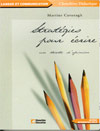 This book, intended for late elementary and early secondary teachers and their students, speaks not only to those with writing problems but also to those with strong skills.
This book, intended for late elementary and early secondary teachers and their students, speaks not only to those with writing problems but also to those with strong skills.
Martine Cavanagh begins with a detailed explanation of five major learning principles based on cognitive psychological research. The principles range from the importance of having a solid network of knowledge to support your opinion to various factors involved in organizing a piece. She then describes three phases in strategic teaching, with steps to be followed in leading students to write an opinion piece.
The first few pages include so many theories and concepts that it would be easy to get lost. But the concepts are also summarized in a table.
Twenty-three lessons that lead to understanding the elements of an opinion piece and how to write one are detailed and clearly explained. Each has assignment sheets, sample texts, a variety of strategies, formative and summative assessment records, and samples of corrected work. All documents can be reproduced.
The author suggests ways to adapt lessons and to incorporate different subject matter. Indeed, the lessons could readily be transposed to teaching science or social science.
The book encourages students to think and work together. Even more important, it prepares them to state their opinions with confidence in a world where people need to stand their ground.
![]() Stratégies pour écrire un texte d'opinion, Chenelière Éducation, Montréal, 2005, ISBN 2-7651-0246-5, 164 pages, $34.95, tel 1-800-565-5531, fax 1-800-814-0324, www.cheneliere-education.ca, info@cheneliere-education.ca
Stratégies pour écrire un texte d'opinion, Chenelière Éducation, Montréal, 2005, ISBN 2-7651-0246-5, 164 pages, $34.95, tel 1-800-565-5531, fax 1-800-814-0324, www.cheneliere-education.ca, info@cheneliere-education.ca
Reviewed by Sophie Simard-Arès, a Grade 4 teacher at La Découverte Catholic elementary school in the Ottawa area.
Cartwheels on the Keyboard
Computer-Based Literacy Instruction
by Maureen Carroll
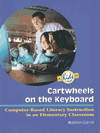 Part of the International Reading Association's K–12 kids' insight series, Cartwheels on the Keyboard presents the results of author Maureen Carroll's three-month observation of one teacher and her elementary-grade students as they integrated computer-based literacy instruction into their curriculum. Carroll, the CEO of Bay Breeze Educational Resources, looks at the question: How can computers be integrated in a meaningful way to nurture literacy skills?
Part of the International Reading Association's K–12 kids' insight series, Cartwheels on the Keyboard presents the results of author Maureen Carroll's three-month observation of one teacher and her elementary-grade students as they integrated computer-based literacy instruction into their curriculum. Carroll, the CEO of Bay Breeze Educational Resources, looks at the question: How can computers be integrated in a meaningful way to nurture literacy skills?
Each of the book's seven chapters investigates a different aspect of computer applications in a real-life classroom environment. These include
- the introduction of computer technology into the classroom
- the literacy curriculum
- voices and values in the computer classroom
- computer collaborations
- thematic units using computer resources
- the value of working in groups: collaboration.
The applications are creative and highly useful for classroom study, with clear thematic links to language arts, technology, literacy and teaching strategies. They present ideas on which the inspired teacher can build. Appendices explore data analysis and lesson plans.
Cartwheels closes with an extensive reference list and well-organized index. For teachers struggling to integrate computers in meaningful ways, Cartwheels on the Keyboard is a practical aid.
![]() Cartwheels on the Keyboard, International Reading Association, Newark, Delaware,
2004, ISBN 0-87207-552-4, softcover, 152 pages, $26.33, contact Ontario Library
Association, tel 416-363-3388 or 1-866-873-9867, fax 416-941-9581 or
1-800-387-1181, www.accessola.com, info@accessola.com
Cartwheels on the Keyboard, International Reading Association, Newark, Delaware,
2004, ISBN 0-87207-552-4, softcover, 152 pages, $26.33, contact Ontario Library
Association, tel 416-363-3388 or 1-866-873-9867, fax 416-941-9581 or
1-800-387-1181, www.accessola.com, info@accessola.com
Reviewed by Gail Lennon, who teaches distance-education online secondary courses for adults with the Bluewater DSB.
New from familiar series
Native Nations of North America
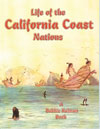
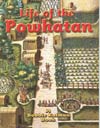 There are three new titles in this series, first reviewed by Helen Donohoe and her colleagues at Sanford Avenue School in Hamilton in the March 2002 issue of Professionally Speaking.
There are three new titles in this series, first reviewed by Helen Donohoe and her colleagues at Sanford Avenue School in Hamilton in the March 2002 issue of Professionally Speaking.
Life of the California Coast Nations describes the lifestyles and traditions of the nations that lived along the coast of California during the seventeenth century.
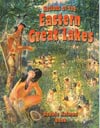
Life of the Powhatan focuses on the many nations that formed the Powhatan confederacy, while Nations of the Eastern Great Lakes tells of the daily lives of the First Nations living in the eastern Great Lakes region during the seventeenth century.
All three books are written in clear, straightforward language and are beautifully illustrated. They are suitable for a reading level of Grade 5 and an interest level of Grades 4 to 9.
![]() Native Nations of North America series (15 titles), Crabtree Publishing Company,
St. Catharines, 2005, each 32 pages, hardcover $20.76, softcover $9.86, entire
series harcover $311.40, softcover $147.90, tel 905-682-5221 or 1-800-387-7650,
fax 905-682-7166 or 1-800-355-7166, www.crabtreebooks.com
Native Nations of North America series (15 titles), Crabtree Publishing Company,
St. Catharines, 2005, each 32 pages, hardcover $20.76, softcover $9.86, entire
series harcover $311.40, softcover $147.90, tel 905-682-5221 or 1-800-387-7650,
fax 905-682-7166 or 1-800-355-7166, www.crabtreebooks.com








